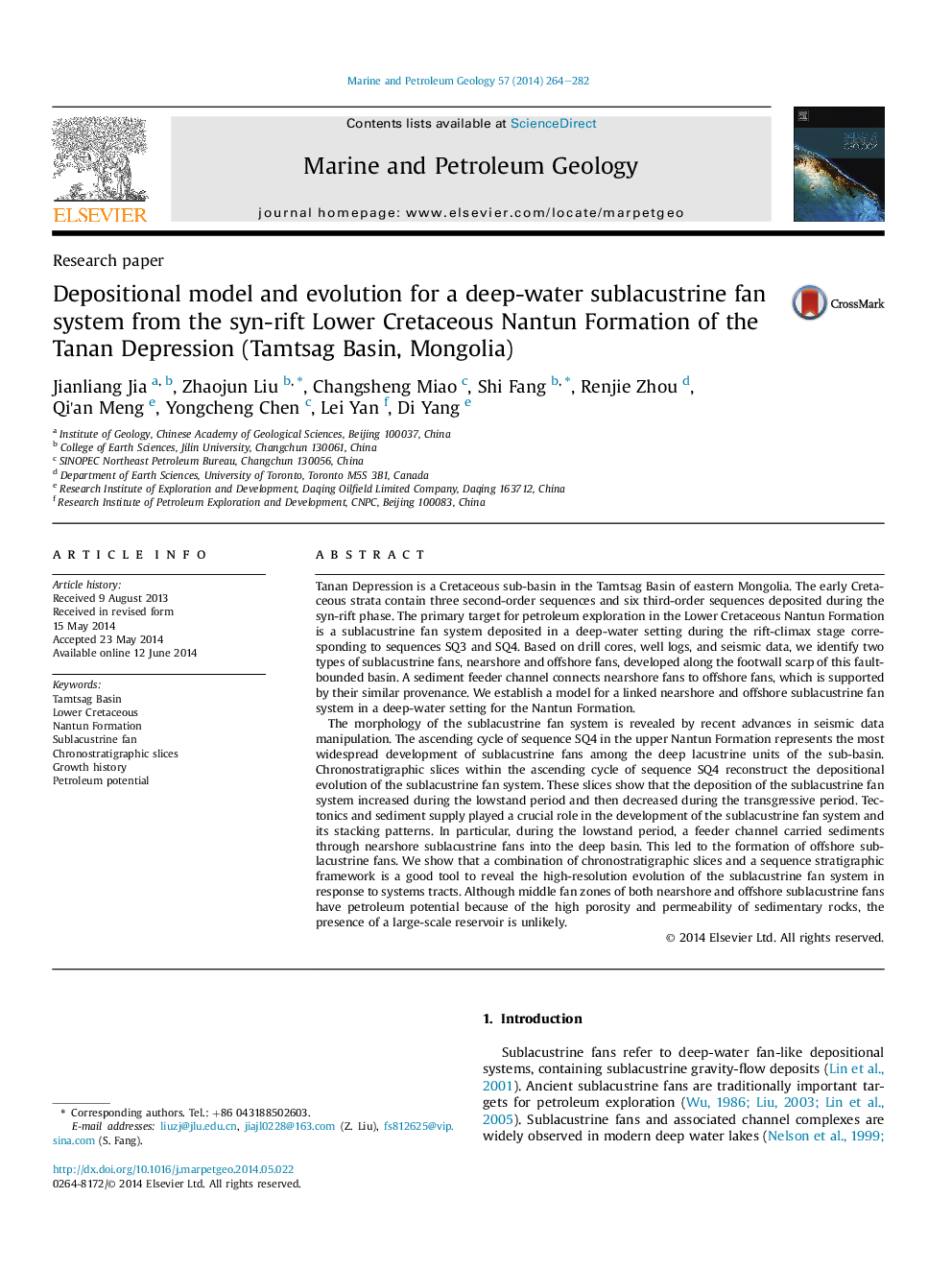| کد مقاله | کد نشریه | سال انتشار | مقاله انگلیسی | نسخه تمام متن |
|---|---|---|---|---|
| 6435350 | 1637167 | 2014 | 19 صفحه PDF | دانلود رایگان |

- Nantun Formation hosts a deep-water, channel-linked sublacustrine fan system.
- Chronostratigraphic slices reconstruct growth history of sublacustrine fans.
- Tectonics and sediment supply control evolution of the sublacustrine fan system.
- Favorable oil-bearing potential locates in middle fan zones of sublacustrine fans.
Tanan Depression is a Cretaceous sub-basin in the Tamtsag Basin of eastern Mongolia. The early Cretaceous strata contain three second-order sequences and six third-order sequences deposited during the syn-rift phase. The primary target for petroleum exploration in the Lower Cretaceous Nantun Formation is a sublacustrine fan system deposited in a deep-water setting during the rift-climax stage corresponding to sequences SQ3 and SQ4. Based on drill cores, well logs, and seismic data, we identify two types of sublacustrine fans, nearshore and offshore fans, developed along the footwall scarp of this fault-bounded basin. A sediment feeder channel connects nearshore fans to offshore fans, which is supported by their similar provenance. We establish a model for a linked nearshore and offshore sublacustrine fan system in a deep-water setting for the Nantun Formation.The morphology of the sublacustrine fan system is revealed by recent advances in seismic data manipulation. The ascending cycle of sequence SQ4 in the upper Nantun Formation represents the most widespread development of sublacustrine fans among the deep lacustrine units of the sub-basin. Chronostratigraphic slices within the ascending cycle of sequence SQ4 reconstruct the depositional evolution of the sublacustrine fan system. These slices show that the deposition of the sublacustrine fan system increased during the lowstand period and then decreased during the transgressive period. Tectonics and sediment supply played a crucial role in the development of the sublacustrine fan system and its stacking patterns. In particular, during the lowstand period, a feeder channel carried sediments through nearshore sublacustrine fans into the deep basin. This led to the formation of offshore sublacustrine fans. We show that a combination of chronostratigraphic slices and a sequence stratigraphic framework is a good tool to reveal the high-resolution evolution of the sublacustrine fan system in response to systems tracts. Although middle fan zones of both nearshore and offshore sublacustrine fans have petroleum potential because of the high porosity and permeability of sedimentary rocks, the presence of a large-scale reservoir is unlikely.
Journal: Marine and Petroleum Geology - Volume 57, November 2014, Pages 264-282